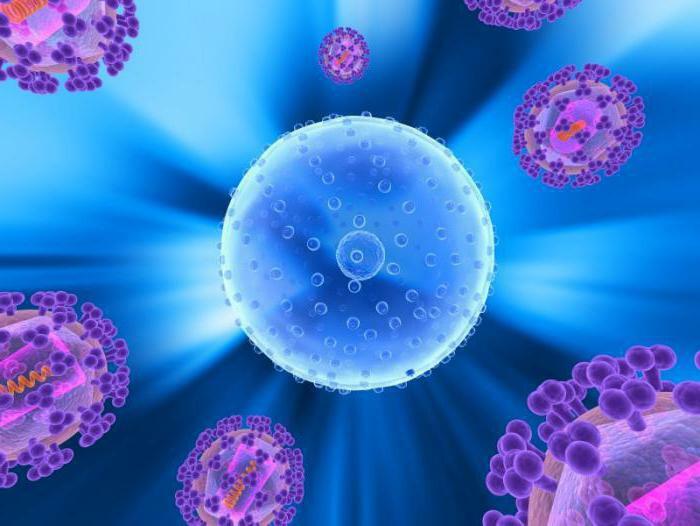Panic attacks in cervical osteochondrosis: symptoms, treatment
Osteochondrosis is a disease that is progressing every day and develops in a large number of people. The main cause of it is called a sedentary lifestyle, which contributes to the deformation of the intervertebral discs and the spasms of the spinal nerves. Panic attacks with cervical osteochondrosis are manifested by an unreasonable sense of fear and require careful examination of the patient. 
Causes of the development of the disease in osteochondrosis
The appearance of panic attacks in osteochondrosis of a physician is associated with the squeezing of the cervical arteries, which supply blood to the brain with oxygenated blood, as well as the necessary microelements for its proper functioning.
Since osteochondrosis is characterized by thinning and deformation of the intervertebral discs, displacement of the cervical vertebrae and the formation of bone outgrowths, arterial trunks are pinched and the proper blood supply and nutrition of the brain is disturbed.
Panic attacks in cervical osteochondrosis are manifested not only by external symptoms, but also by changes in the internal environment of the body:
- changes the pH of the blood;
- is disturbed by calcium metabolism;
- changes the amino acid profile of the blood.
All these disorders lead to changes in the bone structure of the vertebrae and cause an unreasonable sense of fear and anxiety. 
Alternative causes of panic attacks
In addition to osteochondrosis, there are other reasons that can provoke the appearance of unreasonable fears and anxieties in a person:
- pregnancy and the postpartum period, especially accompanied by severe postpartum depression;
- lack of trace elements and vitamins( magnesium and zinc), contributes to the progression of the disease;
- genetic characteristics of the body - in the event that there is an intensive development of adrenaline( hormone of the adrenal medulla);
- general overstrain of the body( physical, mental, mental);
- use of medicines( stimulant and hormonal contraceptives);
- alcohol abuse;
- mental illness.
One of the most common causes of panic attacks are severe stresses. In modern life, it is almost impossible to avoid stressful situations, which negatively affect the state of mental health and the overall work of the body.
Symptoms of the disease
Panic attacks in cervical osteochondrosis are not only a feeling of unreasonable fear. The disease is accompanied by the following symptoms:
- increased heart rate and pulse;
- appearance of dyspnea;
- increased sweating;
- sensation of suffocation or difficulty breathing;
- digestive disorders and abdominal discomfort;
- nausea;
- insomnia;
- pain in the chest, especially localized in the heart;
- feeling of trembling, chills;
- pre-occlusive condition;
- loss of clear mind, confusion of thoughts;
- frequent urge to urinate;
- fear of death, madness and uncontrolled acts.

Severity of symptoms depends on the degree of progression of the disease and degenerative changes in the cervical spine.
Symptoms of severe disease
Panic attacks in cervical osteochondrosis, the symptoms of which are listed above, indicate a severe form of osteochondrosis. At the same time, the sensation of unreasonable fear can be accompanied:
- by convulsions;
- numbness and tingling of limbs;
- loss of balance;
- by dizziness;
- impaired visual and auditory perception.
During the development of the disease, the patient may experience a decrease in the sense of fear in the event of a panic attack. 
What factors provoke panic?
Panic attacks in cervical osteochondrosis occur with prolonged and severe stress, localized in the cervical region, with a long stay in an uncomfortable position, changing weather conditions, psychological or physical fatigue. The transmission of arteries in these cases increases, and the work of the brain is disrupted, as a result of which the development of panic attacks progresses.
Clinical picture of osteochondrosis and attacks burdens the patient's fear of new seizures. Frequent stressful situations or finding a person in uncomfortable conditions( in a confined space or a place with a large population of people) affect panic attacks in cervical osteochondrosis. Patients' comments about the course of the disease sometimes help to more calmly treat the symptoms of unreasonable fear.
Duration and frequency of occurrence of panic attacks
As a rule, the average duration of a panic attack is twenty to thirty minutes. With cervical osteochondrosis, a sense of fear can last from two minutes to several hours.
The frequency of manifestation also has a wide time limit. Perhaps the emergence of attacks only once or twice a month, and in some cases they can be repeated several times a day.
Patients often indicate a sudden appearance of attacks, but when working with a specialist, it is always possible to establish the cause of their occurrence, which depends on a particular circumstance or situation. 
Panic attacks for cervical osteochondrosis: treatment, preparations
For treatment of osteochondrosis and panic attacks as one of its symptoms, it is necessary to use both medicamental and physiotherapeutic treatment. The following medicines are used for drug treatment:
- painkillers( No-shpa, Ketanov);
- anti-inflammatory non-steroidal nature( "Diclofenac", "Ibuprofen");
- improving blood circulation and metabolic processes in the body( "Vazobral", "Vinpocetine");
- mineral and vitamin complexes;
- chondroprotectors( "Rumalon", "Alflutop");
- antidepressants and sedatives( Bellaspon, Afobazol, Grandaxin).
In some cases, reflexotherapy is actively used. Acupuncture and acupuncture by acting on the body's biological active points allow you to monitor and improve its performance. 
Panic attacks in cervical osteochondrosis: treatment with physiotherapeutic procedures and phytopreparations
Physiotherapeutic procedures include:
- therapeutic exercise;
- manual therapy;
- stone therapy( hot stone massage);
- magnetic-vacuum therapy( canned massage).
Phytopreparations have become very popular recently, which allow solving several problems at once:
- harmonize the psychoemotional state;
- normalizes metabolic processes;
- calms the nervous system;
- improve the transmission of nerve impulses;
- strengthens the immune system;
- balances the work of the sympathetic and parasympathetic nervous system.
The reception of phytopreparations allows to improve the general condition of the patient, reduces the frequency and duration of panic attacks, improves the work of the brain.
Panic attacks and cervical osteochondrosis are associated only with a part of specialists, while others believe that these diseases are absolutely independent of each other. The cause of the development of panic attacks is associated with problems in the work of the vegetative department of the nervous system.
